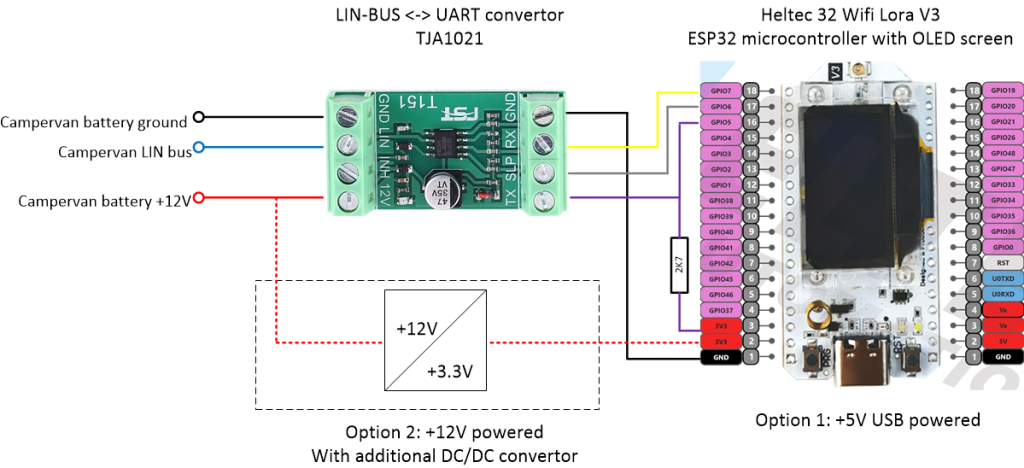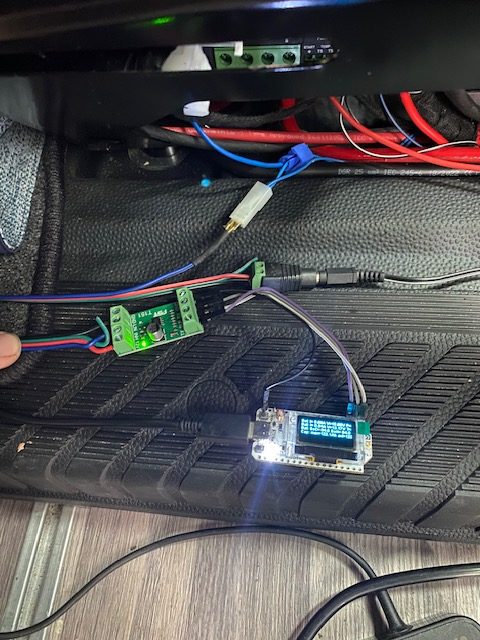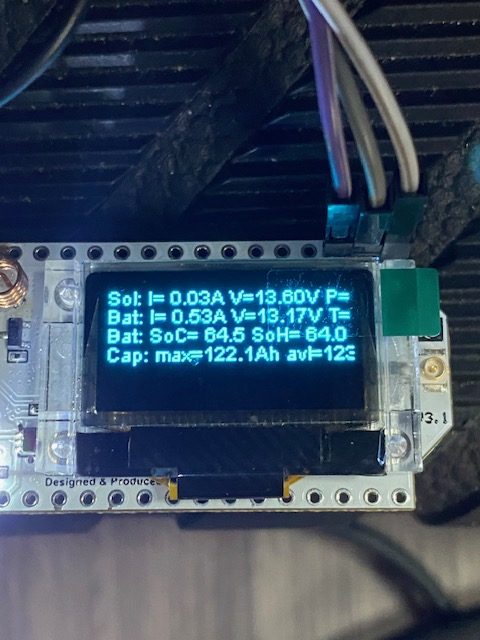The following list contain all observed device ID’s that are addressed on the bus. Several of the device IDs can be attributed to particular equipment or sensors.
ID Device 0x01 Central Electronics or LCD Display 0x02 Central Electronics or LCD Display 0x04 Unknown 0x05 Unknown 0x06 no response 0x0C no response 0x17 no response 0x18 Dometic PerfectCharge SMP439A 0x19 Dometic PerfectCharge SMP439A 0x1B Unknown 0x20 Votronic MPP440CI solar regulator 0x22 Hella IBS 0x25 Hella IBS 0x26 Hella IBS 0x38 no response 0x39 Eberspacher diesel heater 0x3A Eberspacher diesel heater 0x3B Unknown
Some of them do never respond. Those are probably provisions that this Ford nugget is not equipped with, such as an electric sliding door step or an airco. Others have never changed a value in the data of the frame.
The Hella Intelligent Battery Sensor LINBUS protocol has been decoded before as mentioned in part 1 of this series.
--------------------------------------------------------------------------------
Hella IBS Current Volt Temperature
ID : 0x22
data: AB 84 1E F4 2E 84 7A
| | | | | | |
IL IM IH | | | | = Ibat (x-2000000)/1000 Ampere, Ibat>0: charge
VL VH | | = Vbat x/1000 Volt
TT | = Tbat x/2-40 °C
?? = 0x7A and 0x7C observed, correlates to unknown6?
0x7C associated to voltage drop to certain point
--------------------------------------------------------------------------------
Hella IBS State of charge, state of health
ID : 0x25
data: 81 80 E9 B8 BB 00
| | | | | |
CC | | | | | = State Of Charge x/2 in Procent
HH | | | | = State Of Health x/2 in Procent
?? | | | = unknown4 / correlation to Cap_Available or SOC?
?? | | = unknown5 / no direkt link to unkown 4?
?L ?L = unknown6 / corelation to Cap_Available or SOC?
--------------------------------------------------------------------------------
Hella IBS Capacity
ID : 0x26
data: C5 04 CD 04 5F FF
| | | | | |
ML MH | | | | = Max seen Capacity x/10 Ah (=SOH ?)
AL AH | | = Available Capacity x/10 Ah (=SOC)
CC | = Configured Capacity
?? = CalibByte, maybe filled with stuffing bits?
| = b0: CalibrationDone flag, 1=ok, 0=uncalibrated
--------------------------------------------------------------------------------
The Hella IBS can respond to requests on several other IDs, such as 0x21, 0x23 and 0x24. The central electronic module of the Nugget however only requests for the above described three frame types.





